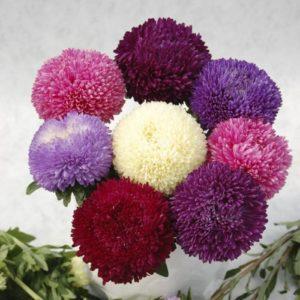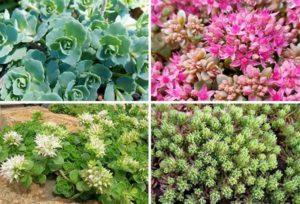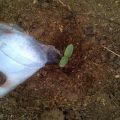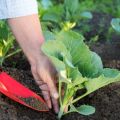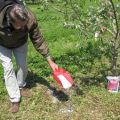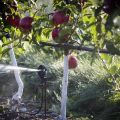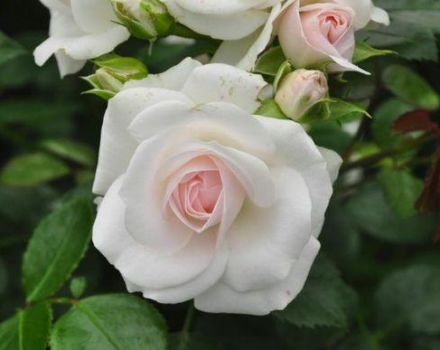Types of fertilizers for feeding gladioli in summer, selection and frequency
Gladioli have earned the title of one of the most beautiful plants in the garden. Selectors have bred this variety for many years. Plants used to have small, loose flowers and stems were weak and lethargic. Numerous experiments have produced strong stems, crimped petals and a large flower. Feeding gladiolus flowers in summer and spring will help to achieve lush flowering.
Essential fertilizers for gladioli
Top dressing is the key to the successful growth of any plant. Gladioli are very sensitive to moisture, they do not tolerate heat well. They need systemic watering, constant fertilization with nutrients.
Replenishment of gladioli should take place according to a specific scheme. It should coincide with the stages of flower development.
Prepare the soil for planting in the fall. Fertility increases when fertilized with manure diluted with water. when choosing mineral fertilizers, you should give preference to simple phosphorus and potassium fertilizers.
The flower emerges 13-19 days after planting. Noticing the first grown shoots, you need to mulch the ground with humus. Peat, straw, chopped bark, pine needles or grass can be used as a substitute. Thanks to these manipulations, the soil does not dry out, aeration improves, and weed germination decreases.
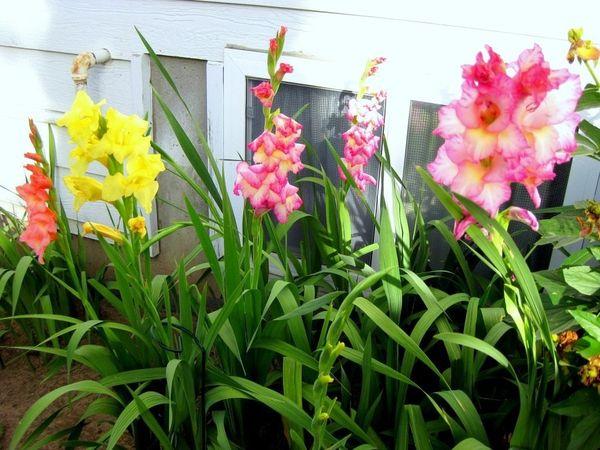
In the spring
The first replenishment of the gladiolus is done at landing. It will ensure the active growth of shoots, form a high-quality leaf mass and lay flower stalks. At the first stage, nitrogen is important for gladioli. You can "nourish" the flower with nitrogen fertilizers or complete mineral mixtures with a low level of potassium.
First feeding
In the spring, it is customary to fertilize the plant:
- urea (25-30 g);
- ammonium nitrate (35-40 g);
- potassium sulfate (20 g);
- wood ash (45-50 g);
- simple superphosphate (35 g).
The specified amount of the mixture must be dissolved in 10 liters of water. The mineral solution is replaced with mullein, chicken droppings with superphosphate and potassium permanganate. After planting the plant in late spring, it is better to postpone the nitrogen fertilization time until 4 leaves appear. After the appearance of 6 leaves, the leaves suspend nitrogen consumption and need more phosphorus.
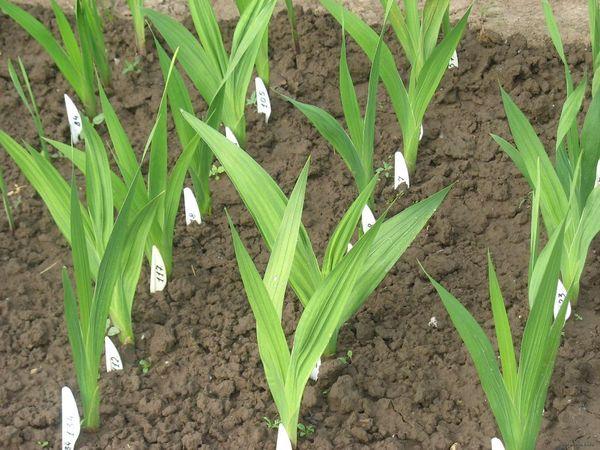
Second feeding
It is necessary to fertilize the plant a second time with a combined solution with elements such as:
- phosphorus-potassium mixture;
- nitrogen-potassium substances;
- phosphate fertilizers.
You can get powerful peduncles and large flowers with the help of foliar feed with micronutrient fertilizers. Corms will be large if fed with boron solution. Boric acid (2-3 g) and water (10 l) are taken for its manufacture.
Summer
For young gladioli in early summer, substances are needed that improve the formation of the root system. Stable growth with a lack of moisture is provided by water-soluble calcium. Plants assimilate this element well, which contains calcium nitrate.
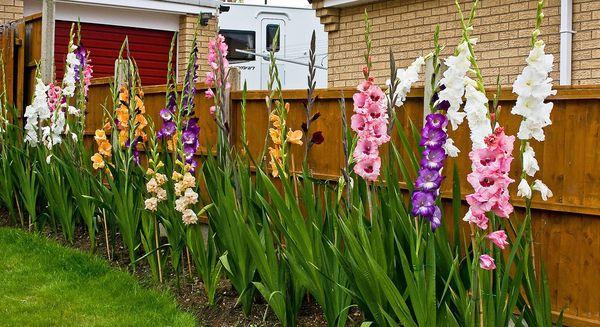
Third feed
At this stage, potassium-phosphate mixtures will be required, especially urea (15-20 g) and potassium sulfate (25-30 g). Ash is especially useful when planting. It contains over 30 nutrients that ensure the abundant flowering of gladioli.
Ash is used for replenishment in early summer, when the first shoots appear. The solution is prepared with water (10 L) and ash (1 L). The mixture is infused for 24 hours, after which you can water the plant.
Further, the recharge of gladiolus occurs according to the following scheme:
- during the period of peduncle formation and flowering, nitrophoska (25-30 g), dissolved in water (10 l), is used;
- when the plant has bloomed, it should be fertilized with superphosphate (15-20 g) and potassium sulfate (25-30 g);
- feeding is done using superphosphate extract. To prepare it, you will need superphosphate (200-250 g) and hot water (1-1.5 l).
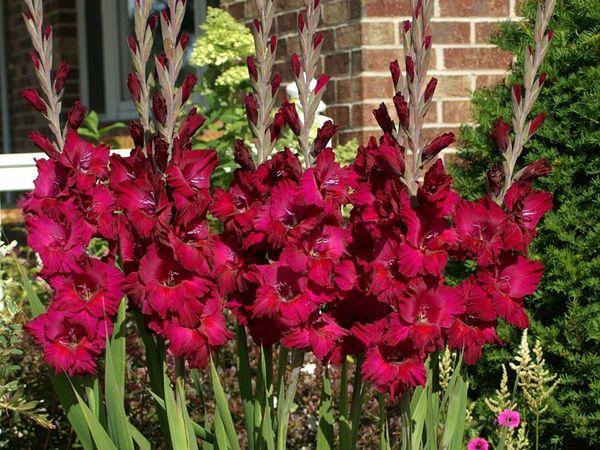
At the beginning of September, disinfection and feeding with a potassium solution is done: potassium permanganate (5 g), water (10 l). Further, the plant does not need feeding. Fertilizer mixtures must be liquid. Powders are not as effective as solutions.
The best food for lush flowering
Phosphate fertilizers affect the output of the peduncle and the number of buds. Without this element, there will be no hydrocarbon exchange, and without its absence, the number of buds and flowering decreases.
Additional stimulation of the rapid development of gladiolus and abundant flowering in the middle of summer is possible. In addition to potassium and wood ash, banana peels can be called a source of useful elements. It contains a lot of potassium, which will accelerate the growth of the flower.
The skin must be dried and chopped. Before planting a flower, it is necessary to sprinkle the ground with the prepared mixture. The decomposition of the mixture will provoke the active production of potassium. With this solution, you can achieve lush flowering and eliminate aphids.
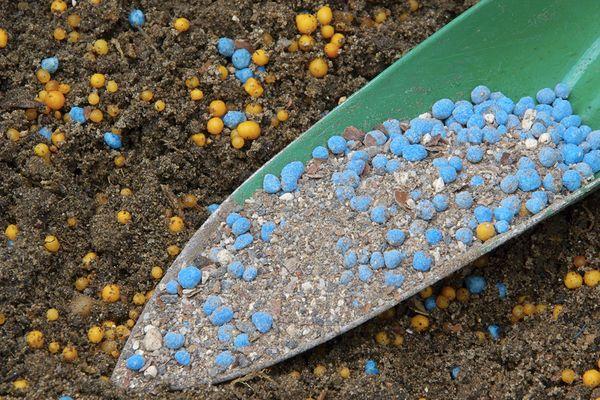
We prepare the fertilizer compositions ourselves
Self-preparation of compositions takes place according to the following rules.
- To form buds and enhance the brightness of flowers, you will need urea (15 g), potassium sulfate (15-20 g), superphosphate (25-30 g), water (10 l). Mix all ingredients thoroughly with water, walk the solution between the rows.
- You can fertilize flowers using complex fertilizers containing trace elements. Before the plant starts to bloom, it needs to be fed with superphosphate (25-30 g), potassium sulfate (20-25 g). Mix the components together, add 10 liters of water and water the beds.
- Feeding can be done with mullein, horse manure and poultry droppings. All elements are mixed with water (10 l) and infused for 4-5 days.
The manure solution (1 liter) can be dissolved in a bucket of water and watered between the rows.
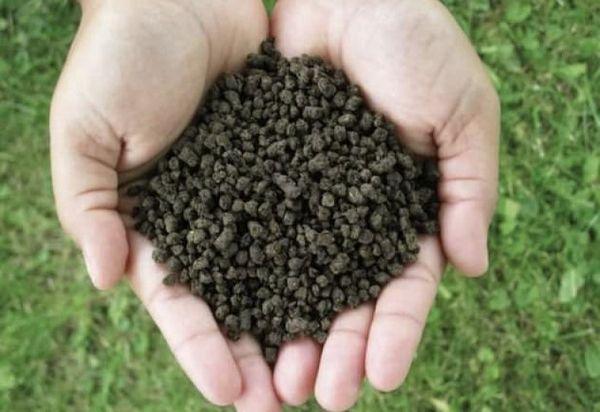
How to properly feed
The soil should be watered before and after fertilization. The soil must be weeded and loosened before top dressing. A nutrient solution is used for watering between rows. After fertilizing the plants, they need to be poured abundantly with water.
You need to feed gladiolus flowers in the evening so that the mixture does not evaporate too quickly and is well absorbed into the roots.
In rainy weather, do not water the gladioli with a solution, the rain will wash it away anyway.
The frequency of feeding
The recharge rate can be determined by the growth stage of the gladiolus. They are usually planted in late spring, so their development is greatly influenced by weather conditions. The growth of gladioli occurs in the following stages:
- the first pair of leaves appears;
- 6-7 leaves are formed;
- peduncles are formed;
- buds bloom.
You can fertilize the plant between the stages of development.In this case, the condition of the plant must be taken into account. In the case of a deficiency of a specific nutrient, it should be applied as an independent fertilizer, or in combination with other trace elements.
